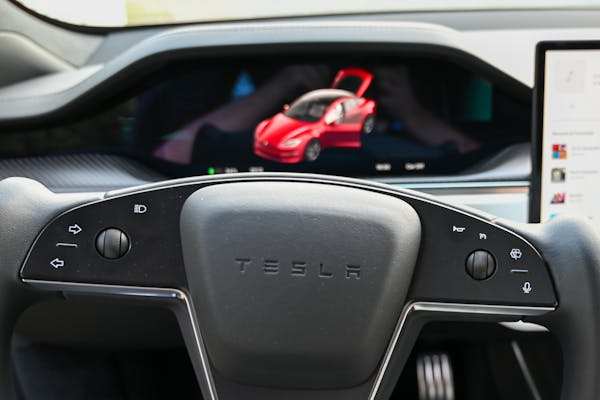In recent years, the concept of autonomous vehicle technology has evolved from science fiction to a reality that promises to reshape the future of transportation. Autonomous vehicles (AVs), commonly referred to as self-driving cars, are poised to revolutionize how people commute, transport goods, and experience mobility. As advancements in artificial intelligence, sensor technologies, and vehicle connectivity converge, autonomous vehicle technology is steadily progressing towards widespread adoption. This article provides a comprehensive analysis of autonomous vehicle technology, delving into its history, key components, benefits, challenges, and broader impact on society.

Introduction to Autonomous Vehicle Technology
Autonomous vehicle technology refers to the suite of technologies and systems that enable a vehicle to navigate, operate, and perform driving tasks without human intervention. These vehicles are designed to sense their environment, make real-time decisions, and execute driving maneuvers autonomously. The goal of this technology is to enhance transportation efficiency, improve road safety, and provide a transformative shift in the way society thinks about mobility.
The rise of autonomous vehicle technology represents a convergence of several key trends: advancements in artificial intelligence (AI), improvements in sensor technologies, the growth of the Internet of Things (IoT), and the increasing interest in sustainable transportation solutions. With tech giants like Google, Tesla, and major automotive manufacturers investing heavily in the development of autonomous systems, the future of autonomous vehicles seems both promising and inevitable.
History and Evolution of Autonomous Vehicles
The journey toward autonomous vehicle technology has been long and incremental. While the concept of self-driving vehicles can be traced back to science fiction, early research and experimentation with autonomous driving began in the mid-20th century. The idea gained significant traction in the 1980s when the Defense Advanced Research Projects Agency (DARPA) funded early initiatives in autonomous navigation systems.
One of the earliest milestones came in 2004 with the DARPA Grand Challenge, a competition that tasked autonomous vehicles with navigating a 150-mile off-road course. Although no vehicles completed the challenge that year, it set the stage for future innovations. In subsequent years, several teams, including Stanford University and Carnegie Mellon, made significant strides in developing autonomous systems capable of navigating complex environments.
The development of modern autonomous vehicle technology accelerated in the 2010s, driven by breakthroughs in AI, machine learning, and sensor fusion. Companies like Google (later Waymo), Uber, and Tesla launched ambitious projects aimed at bringing autonomous vehicles to the mass market. Today, we stand on the cusp of a new era in which fully autonomous vehicles could become an integral part of everyday life.

Key Components of Autonomous Vehicle Technology
Autonomous vehicle technology relies on a combination of hardware and software systems that work in unison to enable safe and reliable driving without human input. The three primary components are sensors and perception systems, AI and machine learning, and vehicle-to-everything (V2X) communication.
A. Sensors and Perception Systems
At the heart of any autonomous vehicle is a sophisticated sensor suite that allows the vehicle to “see” and understand its surroundings. These sensors provide real-time data about the vehicle’s environment, enabling it to make informed driving decisions. Key sensors include:
- LIDAR (Light Detection and Ranging): LIDAR uses laser beams to create a 3D map of the vehicle’s surroundings. It can detect objects, measure distances, and provide critical data for navigation, particularly in low-light conditions.
- Radar: Radar sensors use radio waves to detect the position, speed, and size of objects. They are especially useful for detecting other vehicles, pedestrians, and obstacles in various weather conditions.
- Cameras: High-resolution cameras provide visual data, allowing the vehicle to detect lane markings, traffic signs, and other vehicles. Cameras are essential for image recognition and object classification.
- Ultrasonic Sensors: These sensors are used for short-range detection, typically for parking assistance or avoiding collisions at low speeds.
B. Artificial Intelligence and Machine Learning
AI and machine learning play a crucial role in processing the vast amounts of data collected by the vehicle’s sensors. Machine learning algorithms allow autonomous vehicles to identify patterns, predict future movements of objects, and make real-time driving decisions. AI also enables vehicles to learn from experience, improving their performance over time.
- Object Detection and Recognition: AI algorithms analyze sensor data to identify objects such as pedestrians, other vehicles, and road signs. This allows the vehicle to make appropriate decisions, such as slowing down or changing lanes.
- Path Planning: Autonomous vehicles use AI to calculate the most efficient and safest route from one point to another. Path planning algorithms consider factors like traffic, road conditions, and potential hazards.
- Decision-Making: Based on the information provided by sensors and AI, autonomous vehicles can make decisions such as when to accelerate, brake, or change lanes.
C. Vehicle-to-Everything (V2X) Communication
V2X communication refers to the ability of the vehicle to communicate with its surroundings, including other vehicles (V2V), infrastructure (V2I), and pedestrians (V2P). This technology is essential for enabling autonomous vehicles to operate safely in complex environments where real-time information about road conditions, traffic lights, and pedestrian movements is crucial.
- Vehicle-to-Vehicle (V2V): V2V communication allows vehicles to share information about their position, speed, and direction. This can help prevent collisions and improve traffic flow.
- Vehicle-to-Infrastructure (V2I): V2I communication enables vehicles to interact with traffic signals, road signs, and other infrastructure elements. This is especially important for navigating intersections and optimizing traffic management.
- Vehicle-to-Pedestrian (V2P): V2P communication helps vehicles detect and respond to pedestrians, cyclists, and other vulnerable road users, reducing the risk of accidents in urban environments.
Levels of Autonomy in Vehicles

Autonomous vehicle technology is often categorized based on levels of automation, as defined by the Society of Automotive Engineers (SAE). These levels range from Level 0 (no automation) to Level 5 (full automation).
- Level 0 (No Automation): The driver is fully responsible for all driving tasks, with no automated systems involved.
- Level 1 (Driver Assistance): The vehicle may assist with specific tasks, such as adaptive cruise control or lane-keeping assistance, but the driver remains in control.
- Level 2 (Partial Automation): The vehicle can take over multiple driving tasks simultaneously, such as steering and acceleration, but the driver must remain attentive and ready to take control.
- Level 3 (Conditional Automation): The vehicle can handle most driving tasks in certain conditions, such as highway driving, but the driver must be available to intervene if necessary.
- Level 4 (High Automation): The vehicle can operate autonomously in specific environments, such as urban areas or dedicated AV zones, without requiring driver intervention.
- Level 5 (Full Automation): The vehicle is fully autonomous and can operate in any environment or condition without human input.
Benefits of Autonomous Vehicle Technology
The potential benefits of autonomous vehicle technology are vast and transformative. From improving road safety to enhancing mobility for underserved populations, AVs offer numerous advantages that could significantly impact society.
A. Safety Improvements
One of the most significant benefits of autonomous vehicles is the potential to drastically reduce traffic accidents. Human error is a leading cause of accidents, and autonomous vehicles, equipped with advanced sensors and AI, can eliminate many of the risks associated with distracted driving, impaired driving, and other forms of human error. Studies suggest that widespread adoption of AVs could reduce traffic fatalities by up to 90%.
B. Enhanced Mobility for All
Autonomous vehicle technology has the potential to provide greater mobility for individuals who are unable to drive, including the elderly, people with disabilities, and those without access to reliable transportation. By removing the need for human drivers, AVs could offer on-demand, accessible transportation services that cater to a wide range of mobility needs.
C. Reduced Environmental Impact
Autonomous vehicles can also contribute to a reduction in greenhouse gas emissions. By optimizing driving efficiency, reducing congestion, and encouraging the adoption of electric vehicles (EVs), autonomous vehicle technology can help lower the environmental footprint of transportation. Additionally, AVs have the potential to enable more efficient car-sharing and ride-hailing services, further reducing the number of vehicles on the road.
Challenges and Limitations
Despite the many benefits, the widespread adoption of autonomous vehicle technology faces several significant challenges. These challenges span regulatory, technological, and societal domains.
A. Regulatory and Legal Hurdles
One of the primary obstacles to the deployment of autonomous vehicles is the lack of a comprehensive regulatory framework. Governments and regulatory bodies are still grappling with how to address issues such as liability in the event of an accident, privacy concerns, and the certification process for AVs. The development of clear and consistent regulations is crucial for ensuring the safe and responsible deployment of autonomous vehicle technology.
B. Technological Barriers
While autonomous vehicle technology has made significant progress, there are still several technological challenges to overcome. These include improving the reliability of sensors in adverse weather conditions, ensuring the robustness of AI decision-making in complex environments, and achieving seamless V2X communication. Furthermore, the transition to fully autonomous systems (Level 5) will require substantial advancements in both hardware and software.
C. Public Trust and Acceptance
Public perception and trust in autonomous vehicles remain a major hurdle. While early adopters and tech enthusiasts may embrace the concept, a significant portion of the population remains skeptical about the safety and reliability of autonomous vehicles. High-profile accidents involving AVs have also raised concerns about the readiness of the technology. Building public trust will require transparent communication, rigorous safety testing, and real-world demonstrations of the benefits and safety of AVs.
The Future of Autonomous Vehicle Technology
As autonomous vehicle technology continues to evolve, several emerging trends and innovations are shaping the future of transportation.
A. Trends and Innovations
- Artificial Intelligence Advancements: Ongoing advancements in AI and machine learning will enable more sophisticated decision-making and improve the safety and efficiency of AVs.
- Edge Computing: By processing data closer to the source (within the vehicle itself), edge computing can reduce latency and enhance the real-time performance of autonomous systems.
- Electric and Autonomous Integration: The combination of electric vehicles (EVs) with autonomous technology could create a more sustainable transportation ecosystem, reducing reliance on fossil fuels.
B. Autonomous Freight and Delivery Services
While much of the focus has been on autonomous passenger vehicles, autonomous freight and delivery services are likely to be among the first widespread applications of AV technology. Companies like Waymo and Tesla are already developing autonomous trucks that can transport goods over long distances without the need for human drivers. Similarly, drone-based delivery services are being explored by companies like Amazon, with the potential to revolutionize the logistics industry.
C. Urban Planning and Smart Cities
The rise of autonomous vehicles is expected to have profound implications for urban planning and the development of smart cities. With the widespread adoption of AVs, cities could see reduced traffic congestion, improved public transportation networks, and the creation of new public spaces as parking lots and roads become less necessary. Autonomous vehicles could also play a key role in enhancing the efficiency of public services, such as waste collection and emergency response.
Navigating the Road Ahead
Autonomous vehicle technology represents one of the most exciting and disruptive innovations of the 21st century. As we look to the future, the potential benefits of AVs are immense—improved road safety, enhanced mobility, and a more sustainable transportation system. However, significant challenges remain, particularly in terms of regulatory approval, technological development, and public acceptance.
The journey toward fully autonomous vehicles will require collaboration between governments, industry leaders, and the public. With continued innovation and investment, autonomous vehicle technology has the potential to reshape how we move, live, and interact with our environment. As society navigates this new frontier, the promise of a safer, more efficient, and more inclusive transportation system is within reach.





